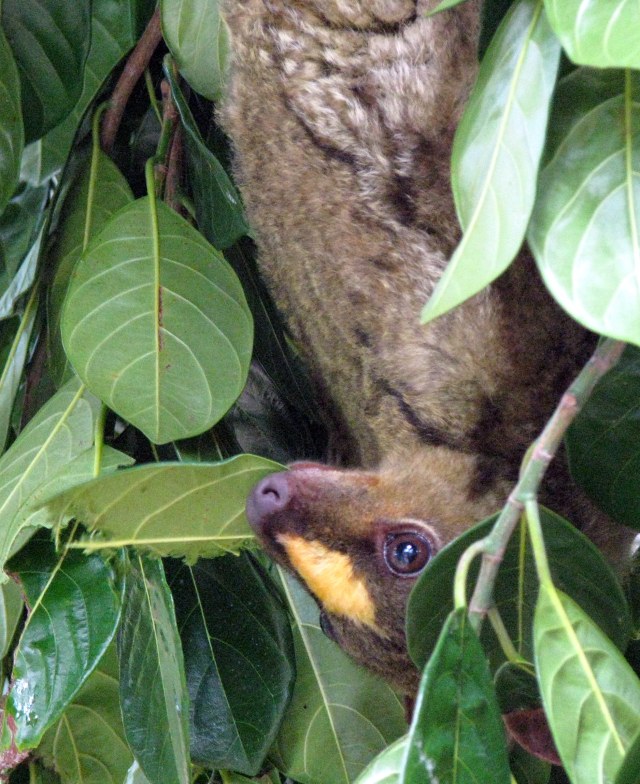Here’s a picture I took when I was in Bohol of a captive Philippine Flying Lemur (Cynocephalus volans). They are not usually active during the day but I was lucky enough to capture this guy while he was feeding. Look at the mastication pattern on the leaf; it doesn’t just chomp away from one side, it chews its way around the perimeter, spinning the leaf as it goes. I wonder if it spins every leaf it eats in the same direction.
Flying Lemurs are mostly known in the public eye as the mammals with the most developed gliding ability. Flying Lemurs have extensive patagiums and while gliding, they have been described as looking like “furry kites”. They are typically placed in their own order, Dermoptera, which is not very speciose. Aside from C. volans, there is only one other extant Dermopteran, the Sunda Flying Lemur (Galeopterus variegatus).
I didn’t find much technical information on C. volans, but I did come across a paper discussing their foraging behavior. Apparently, compared to other dedicated arboreal folivores like sloths and koalas, flying lemurs are much more active. Hopefully more information will come out on these unique treasures of Southeast Asia.
Links-
Wischusen E.W. & Richmond M.E. (1998) Foraging Ecology of the Philippine Flying Lemur (Cynocephalus volans). Journal of Mammology, 79(4): 1288-1295 (pdf)
Ducrocq S. et al. (1992) First Fossil Flying Lemur: A Dermopteran from the Late Eocene of Thailand. Palaeontology, Vol. 35, Part 2, 373-380 (pdf)

